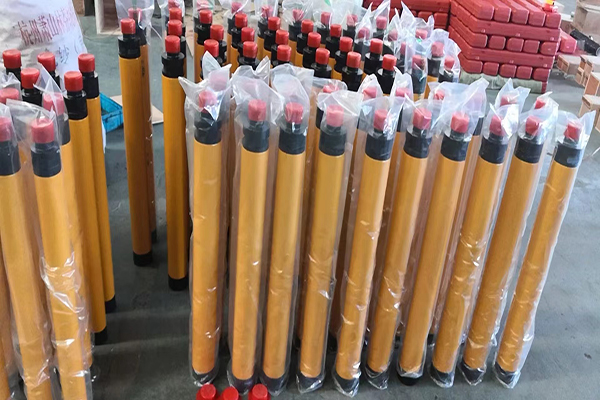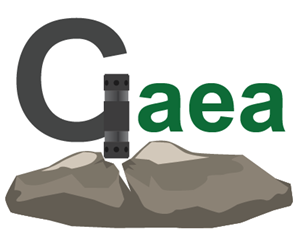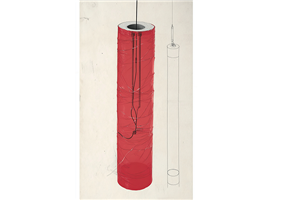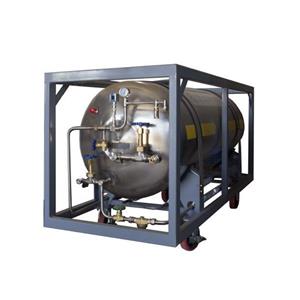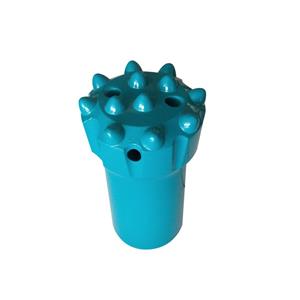Popular Science and Maintenance Guide for Down-the-Hole hammers
The down-the-hole hammer is a rock drilling tool, which consists of a piston, an inner cylinder, a valve seat, a check valve and drill bit accessories installed in a slender outer cylinder. The upper end of the outer cylinder is equipped with a wrench mouth and a connecting threaded upper joint, and the lower end is equipped with a threaded clamp sleeve. The clamp sleeve is mainly used to transmit the propulsion force and rotary surge of the drill bit. The clamp ring controls the axial movement of the drill bit, and the check valve is used to prevent debris such as rock debris from entering the hammer when the argon supply is stopped. During the excavation process, the drill bit is pushed into the hammer and pressed on the clamp sleeve. At this time, the piston directly impacts the drill bit to drill the rock. When the drill bit is lifted off the bottom of the hole, the compressed air directly enters the bottom of the hole to forcefully blow the rock debris, and then the hammer repeats the above activities. The down-the-hole hammer is a breakthrough in the rock breaking method of air drilling technology, and has high drilling efficiency. During the rock drilling process, it always stays at the bottom of the hole, and the compressed gas pushes the piston to impact the drill bit to break the rock, and the rock debris at the bottom of the hole is blown out of the bottom of the hole by the compressed gas. The rotary motion of the hammer is provided by the rotary head, and the axial thrust is provided by the propeller, which is transmitted to the hammer through the drill rod. The down-the-hole hammer is the core component of the down-the-hole drill.
1. Because the upper and lower joints of the hammer are right-handed threads, the right rotation should always be maintained during the drilling process, otherwise the hammer will fall into the hole, causing the hammer and drill bit to be lost. However, in actual operation, some operators often reverse the rotation due to drill clamping, causing the hammer and drill bit to fall into the hole after the thread loosens. Therefore, reversal must be avoided.
2. When drilling a hole, due to the influence of surface scum, a smaller impact and thrust should be used to allow the drill bit to enter the rock formation smoothly.
3. It is important to match the thrust force and the weight of the drill tool. The thrust of the propeller must change with the change of the weight of the drill tool. When the hole drilling gradually deepens, due to the lengthening of the drill rod and the weight of the drill tool, the thrust force will decrease with the weight of the drill tool.
4. Adjust the working parameters at any time according to the operating experience and instrument data. The rotary speed of the hammer is 15~25r/min. The faster the speed, the faster the rock drilling speed. However, in hard rock formations, the speed should be reduced to ensure that the drill bit does not wear out too quickly.
5. Blockages and cracks in the rock formations with holes are often encountered during the drilling process, which may cause the drill to get stuck. Therefore, the hammer should be used for strong blowing regularly to reduce the phenomenon of drill sticking.
6. With the change of hole depth, the drill rod needs to be connected and unloaded. During the process of connecting and unloading the rod, rock slag and various impurities often fall into the hammer, thus affecting the normal operation of the hammer. Therefore, when connecting and unloading the drill rod, be careful not to let impurities enter the drill rod. (Impurities entering the hammer can easily cause the piston to get stuck, and operation with impurities can easily cause the piston to get damaged and the air tightness of the hammer to be insufficient)
7. Reasonable lubrication of the hammer cannot be ignored, otherwise it will accelerate the wear of the hammer. In order to reduce the consumption of lubricating oil, the operator often does not add enough oil, which accelerates the wear of the hammer and increases the operating cost of the equipment. Therefore, the operator should observe the use of the hammer and replenish the lubricating oil in time.
8. After the hammer is used, it should be disassembled regularly and cleaned with clean kerosene to clean the hammer accessories. After cleaning, check the wear of the surface of the accessories to see if the accessories need to be replaced. Check whether the thickness of the outer cylinder supports continued use. When installing it back, check whether the rubber seal is corroded and whether it can still play a sealing role. If the sealing effect is lost, replace the new accessories.
Common troubleshooting methods
1. The hammer is worn or damaged prematurely. Insufficient lubricating oil or no lubrication causes wear of the moving parts of the hammer, which causes premature wear or damage to the hammer. Check the use of the hammer regularly and fill oil from the top of the hammer regularly. Because the hammer is operated by compressed gas, if the oil content of the compressed gas is increased, it can also play a good lubricating role.
2. The hammer does not work or works abnormally. The reasons are: the gas circuit or the hammer is blocked. The gap between the piston and the inner and outer cylinders, the gap between the piston and the valve seat is too large; the piston is broken. Check whether the air pressure and gas circuit are normal; disassemble the hammer to check the wear. Replace the worn parts. Clean the internal parts of the hammer; replace the piston
3. The drill bit and the drill sleeve fall off together. The reason is that the hammer rotates in the wrong direction when working. You can use a salvage device to hook up the fallen parts and reassemble them; when drilling and lifting, make sure to rotate to the right.
